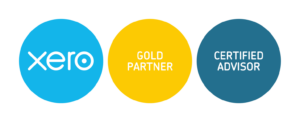What’s The Average Overhead Costs for Restaurants in 2025?

One part of running a restaurant that often goes unspoken is keeping track of the many financial metrics to understand how your business is performing. Each one gives you insight into making decisions that could mean the difference between thriving and just surviving.
One of the most important metrics you need to understand is overhead costs for restaurants.
Knowing your overhead is not just counting your bills. It is about understanding how much of your sales go to keeping the lights on.
Read on as we unpack what overhead costs are for various restaurant types in 2025, how you can benchmark them and keep your overhead in check.
What Are Overhead Costs for a Restaurant?
Overhead Costs for Restaurants are the indirect expenses of running your business, not directly tied to producing the food or drinks you sell. A simple way to think of it is the costs you’d still incur even if the restaurant were closed for a week. You wouldn’t pay servers or buy ingredients, but you would still owe rent and other fixed expenses.
Common examples of Overhead Costs for Restaurants include rent or lease, utilities, insurance, marketing, administrative salaries, accounting fees, repairs and maintenance, licensing fees, cleaning services, and your POS system subscription.
A 2025 industry guide finds that restaurants typically spend around 35 cents of every dollar they make on overhead, or 35% of their revenue.
How to Calculate Your Overhead Percentage
First, you would need to identify your indirect costs.
Here’s an example:
Rent = $15,000
Utilities = $7,000
Advertising = $5,000
Accounting = $2,000
Total Indirect Costs = $15,000 + $7,000 + $5,000 + $2,000 = $29,000
Next, use this formula to calculate the overhead percentage:
Overhead Percentage (%) = (Total Indirect Costs ÷ Total Sales) × 100
Using the same example, imagine that your total monthly sales are $100,000.
Overhead Percentage (%) = ($29,000 ÷ $100,000) × 100 = 29%
That brings your overhead percentage to 29%. If you can keep this number within or below your industry’s average, you’ll have more room in your budget for profit and reinvestment. For restaurants looking to grow, exploring your options for financing restaurant expansion can provide the capital needed to scale operations while maintaining healthy overhead and profitability.
Average Overhead by Restaurant Type in 2025
While the general industry benchmark for Overhead Costs for Restaurants hovers around 35%, it’s important to remember that your overhead percentage can vary depending on your restaurant’s concept and operations.
Here’s what it typically looks like in 2025:
- Fast Food: 33–45%
- Fast Casual: 39–51%
- Cafe: 41–54%
- Full-service casual: 46–59%
- Fine Dining: 53–66%
These differences come down to how each restaurant concept uses space, staffing and operational complexity. For example, full-service restaurants have larger dining areas, more staff on the floor and more utilities in use, which all push overhead higher.
A fast food chain may accept higher Overhead Costs for Restaurants at outlets in prime locations with premium rent if it helps promote the brand and drive long-term growth.
How To Evaluate Overhead Alongside Prime Cost
If overhead costs for restaurants shows you the cost of keeping your restaurant open, prime cost shows you the cost of serving your customers.
Prime cost = COGS (cost of goods sold) + total labor costs
For example, if your COGS is 32% of sales and your total labor is 28%, your prime cost is:
Prime Cost = 32% + 28% = 60%
Many restaurant owners aim to keep prime cost at or below 60–65%. If your prime cost is under control and your overhead is in line with your restaurant type, you’re in a strong position to be profitable.
Why does this matter? Because the prime cost and overhead together make up nearly all your expenses. If one creeps up, the other must come down to protect your profit margin.
Learn more about how to calculate prime cost HERE
Practical Ways to Keep Overhead in Check
While some overhead costs are fixed, like rent, others can be optimized.
Here are a few ways you can reduce your overhead:
- Renegotiate your lease or consider sharing kitchen space with a pop-up or ghost kitchen
- Cut utility bills with energy-efficient appliances and LED lighting
- Use technology like modern POS systems, inventory tracking, and scheduling tools to save time and reduce waste
- Outsource non-core tasks like accounting or payroll so you can focus on running your kitchen.
The key is to monitor your Overhead Costs for Restaurants regularly. Compare them month to month and watch for patterns if overhead is rising faster than sales, it’s time to take action.
Need Help Understanding Your Overhead Costs?
Even though industry averages are helpful, your real benchmark is your own numbers. A quick-service restaurant running at 50% overhead is a red flag, while a fine-dining restaurant at 55% might be perfectly normal.
At U-Nique Accounting, we help restaurant owners, like you, track and analyze your overhead and prime costs. We work with you to budget and forecast your numbers, so you can make confident, informed decisions.
If you want to see exactly where your overhead stands, get in touch with us today.

By MATT CIANCIARULO



